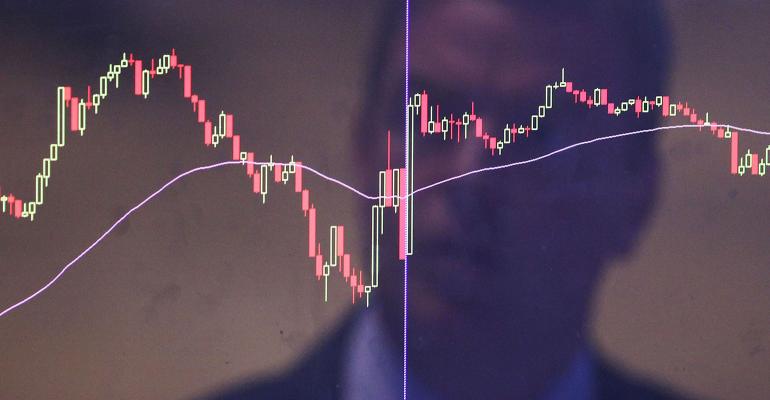by Nir Kaissar
(Bloomberg Gadfly) --BlackRock shook the world of active management on Tuesday when it announced that it had fired five of its 53 stock pickers. BlackRock will also move $6 billion of the $201 billion invested in traditional active management to quant strategies.
The announcement may not sound earth-shattering, but it augurs a larger trend: Traditional active management is dying, but perhaps not for the reason you might think.
The evidence has piled up in recent years that the vast majority of active managers fail to beat the market net of their fees. A common reaction is that beating the market is too difficult and that it’s therefore a waste of time and money to try.
But just the opposite is true. As I’ve previously noted, the problem is not that active managers fail to outperform the market; it’s that they keep that outperformance for themselves through high fees. In the meantime, index providers have turned traditional styles of active management -- such as value, quality and momentum -- into shockingly simple indexes run by computers. Those indexes have beaten the market and are now widely available to investors as low-cost smart beta funds.
Smart beta has proved to be a popular alternative to traditional active management. According to Morningstar, investors pulled $313 billion out of actively managed mutual funds over the last five years through 2016. At the same time, they invested $314 billion in smart beta mutual funds.

In other words, stock picking isn’t dying because it’s too hard but because it’s too easy.
It’s not just the average stock picker who will be displaced by computers. Even the best pickers will struggle to keep up with the bots. In fact, had smart beta existed 30 years ago, it most likely would have kept pace with -- or even beaten -- the most revered stock pickers.
Consider the track records of two hall-of-famers. Under Peter Lynch, Fidelity’s Magellan Fund returned 29.1 percent annually from May 1977 to May 1990, including dividends, with a standard deviation of 21.1 percent. (Standard deviation reflects the performance volatility of an investment; a lower standard deviation indicates a less bumpy ride.)

Now compare that with a simple quantitative value strategy compiled by Dartmouth professor Ken French that selects the cheapest 30 percent of U.S. stocks by price-to-book ratio and equally weights among them. That strategy returned 23 percent annually over the same period, with a standard deviation of 17 percent.
Using the simplest measure of risk-adjusted return -- annual return divided by standard deviation -- both Lynch and the value strategy notched identical return-to-risk ratios of 1.4.
Consider, also, Bill Miller’s legendary 15-year winning streak against the S&P 500. Miller’s Legg Mason Value Trust returned 16.4 percent annually during those 15 years from 1991 to 2005, with a standard deviation of 18 percent. French’s value strategy, by comparison, returned 27.3 percent annually with a standard deviation of 17.3 percent.

This time both the value strategy’s absolute and risk-adjusted returns were better. The Value Trust had a return-to-risk ratio of 0.9, compared with 1.6 for the value strategy. Granted, the value strategy lost to the S&P 500 in two of those 15 years -- 1995 and 1998 -- but I suspect that investors would have been more than comforted by the strategy’s higher returns.
This doesn’t have to be doomsday for active managers, however. Big data, technology and investors’ demands for lower fees have made the changes in the fund business inevitable. Anything that can be automated and cheaply delivered -- such as stock picking -- must be.
But not everything can be automated -- yet. Index providers have not been able to replicate the full menu of hedge fund strategies. At the same time, a growing number of investors are balking at hedge fund fees. That opens the door for active managers to offer hedge fund strategies more cheaply, just as index funds have done with stock picking.
That trend is already underway. According to Morningstar, assets in so-called alternative funds -- which offer hedge fund strategies in a mutual fund wrapper -- have ballooned from $39 billion 10 years ago to $209 billion today. My guess is that alternative mutual funds will continue to benefit from investors’ growing disillusionment with hedge funds.
There’s still a place for humans in investing, but it’s not old-fashioned stock picking. Active managers need to wake up to that new reality.
This column does not necessarily reflect the opinion of Bloomberg LP and its owners.
Nir Kaissar is a Bloomberg Gadfly columnist covering the markets. He is the founder of Unison Advisors, an asset management firm. He has worked as a lawyer at Sullivan & Cromwell and a consultant at Ernst & Young.
To contact the author of this story: Nir Kaissar in Washington at [email protected] To contact the editor responsible for this story: Daniel Niemi at [email protected]





